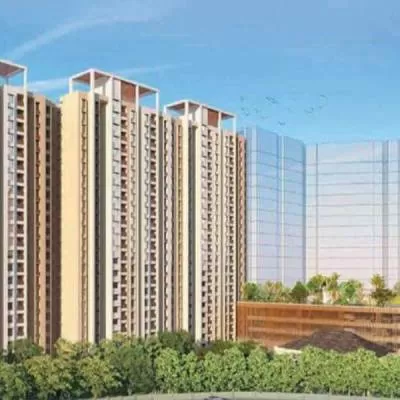- Home
- Real Estate
- Will the Budget 2019 meet the real estate and constructions sector expectations?
Will the Budget 2019 meet the real estate and constructions sector expectations?
- “Increase the budgetary allocation for infrastructure development: The government should earmark more funds to improve the infrastructure of the country as infrastructure development is crucial for the growth of the economy as well as the building materials industry. The government should increase the spends on building smart cities, road and railway network, port and airport development, solar park development, strengthening of logistics and warehousing segment, affordable housing launches and metro rail network expansion. These initiatives will have a direct positive impact on the building material industry.
- Rationalisation of GST: One of the areas that need immediate intervention is the GST rates. The government should rationalise the GST rates for several components in building material industry. The upcoming budget should look at bringing down the GST rates of some of the essentials and raw materials from the current 28 per cent to 18 per cent. The reduction will help the building material industry to bring down the cost of the products and thereby improve consumption.
- Bring Natural gas under GST regime: Currently, Petroleum and Natural Gas are taxed under VAT. Extending GST to the natural gas will reduce the cost of tile production and thereby positively impact the overall price of tiles in India. The prices of the end product will come down by 10 per cent. Apart from the building material industry, implementation of GST for natural gas will aid the logistics sector, which plays a vital role in the growth of the building material industry.
- Set up a mechanism to monitor the timely execution and dispersal of funds: The government should encourage and ensure greater participation from private players. They should address concerns related to regulatory uncertainties as well as the time and cost overruns. This will call for setting up a comprehensive mechanism that monitors the progress and accordingly disperses the funds.”
- “Re-introduction of accelerated depreciation at a rate of 80 per cent for windmills and solar projects to retail investors with project size less than 25 MW. The step, besides providing a level playing field for SME and small investors and continue diversity in investments in the sector, will also benefit Central Public Sector Enterprises (CPSEs).
- GST on services relating to setting up, power evacuation and operation & maintenance services (OMS) of a Renewable Energy project should be capped at 5 per cent from the present 18 per cent. The services for Balance of Plant (BOP) that is the services required for setting up and power evacuation of Renewable Energy Project should be taxed, at the rate of 5 per cent. Tax OMS should also be taxed at a rate of 5 per cent.
- Concessional rate/ preferential rate of finance is required with a 2 per cent rebate as cost and availability can potentially impact viability. This will directly benefit consumers as energy prices will be kept low.
- The export incentive must be hiked from the present 2 per cent to 10 per cent to make Indian exports competitive in the global market. Also Power Finance Corporation (PFC) and Indian Renewable Energy Development Agency be mandated to allow issuance of the line of credits to OEMs for exports from India.
- The activity of generation and distribution of power should be included in provisions of section 32(1) (iia) (Additional depreciation), 32AD (Investment allowance for setting up projects in backward area of AP and Telangana) and 115BA (Section allowing an assesse to opt for concessional rate of tax of 25 per cent).”
- “GST Return: The government should consider allowing centralised GST return for suppliers providing contract services in various states and thereby reducing the compliance burden.
- Tax Benefits to home buyers & Investors: While the budget in February did try to woo back investors and buyers by offering some sops, there need to be more direct benefits by way of reduction in income tax slabs, higher relief on housing loan rates, and an increase in the deduction limit under Section 80C from the current INR 1.5 lakh a year. The fact that the deduction limit under Section 80C was last increased in 2014 after a hiatus of a decade strongly indicates that the government could consider revising it now. Though it will eventually be an added burden on the exchequer, it will help bring back buyers and revive the sector.
- Single window clearance: At present, the multiplicity of permissions and approvals that developers are required to secure and it could take anywhere from 18 months to 36 months before beginning any project. Government should introduce Single window clearances in Real estate sector, it will not only cut down the project delay but it will also reduce the construction costs as well.
- More investment: Real estate is a major driver for the Indian economy. To make it even stronger, the government must introduce new policies as well as infrastructural developments that can further attract foreign investments into the sector and help in huge employment generation.
- Stronger infrastructure to drive growth: The government’s undisputed focus on infrastructure will not only boost the economy but it will also help to create more employment, which is a major point for the government. Infrastructure deployments should be amplified across both urban and rural India.”
- “Granting of infrastructure status to the entire real estate sector is one of the most pressing expectations the industry has from the Union Budget. In fact, granting infrastructure status on affordable housing has witnessed many reputed developers launching projects in the affordable segment. It will aid them to avail financing at lower interest rates. As a result, more and more projects will become operational and eventually become affordable for the homebuyer.
- Another area that the budget should look into is the liquidity crunch caused due to the NBFC crisis. The budget should recommend a recovery road map and create a favourable environment for ECB (External Commercial Borrowings). Further, the budget should ear mark more funds and continue its thrust on infrastructure development as well as housing for all initiative. They should also explore providing incentives to players who are venturing into new asset classes in real estate like affordable housing, warehousing and logistics, co-working spaces, co-living spaces and light industrial spaces.
- The sector also looks forward to a streamlined approval process with Single Window Clearance. This will ensure project approvals to be processed more quickly, resulting in reduced construction costs, thereby substantially reducing property costs.
- Furthermore, the interim budget had announced many initiatives like extending benefits under Section 80-IBA of the Income Tax Act, TDS exemption on rental income and tax exemption on notional rent etc to encourage home buying; the upcoming budget should raise the threshold of these incentives. They should revise the income tax slabs and reduce the overall tax expenditure. This will enhance the ability of the salaried class to invest in real estate. Expanding the availability of income tax deductions for home buyers can encourage new buyers and widen the market opportunity.
- India’s real estate sector is one of the fastest growing in the world. It is also the second largest employment provider in the country, next only to agriculture. The sector is expected to employ over 60 million people and reach USD 180 billion by 2020 comprising 11 per cent of the GDP. We are hopeful that the union budget will propose initiatives that will speed up the growth of the industry.”
- “Successful implementation of RERA (Real Estate (Regulation & Development) Act) in all states, ensuring accountability from all stakeholders concerned.
- Public participation is key to the growth of infrastructure for future. The Government should create awareness among the masses on the need for better infrastructure, even if it means the Pay to use model.
- Ease the liquidity crunch for making funds more accessible to home buyers and consumers, which will again boost Indian real estate sector.
- Developers need to seek on an average of 25 approvals for each project which increases project timelines, delivery and the cost significantly. A simplified online approval process with a single window clearance will speed up the process and benefit the sector.
- Adoption of digital technology will increase transparency and help boost the confidence of global investors in the Indian Real Estate sector. Both government and private parties need to implement the key attributes of block-chain technology to modernize real property conveyance and improve processes for recording deeds and other related instruments.
- There should be a robust government mechanism, which can address issues such as hoarders, black marketers and sand mafia or else cartels will be detrimental to the future of the construction sector.
- The much awaited “Industry Status” will simplify the approval process, attract equity investment, improve transparency among other large impetus providing measures to the booming Real Estate sector in the country.”
- Budget 2019
- constructions sector
- Finance Minister
- Nirmala Sitharaman
- building materials
- Nuvoco Vistas Corp
- Aparna Enterprises
- Asian Granito India
- Hind Rectifiers
- Suzlon Group
- KEI Industries
- IEEMA
- Tornado
- Wedevelopment
- Runwal Group
- The Wadhwa Group
- Omkar Realtors
- CREDAI National
- Aparna Constructions & Estates
- Embassy Group
- NAREDCO Maharashtra
- NBFC
- Stamp Duty
- GST
- Industry Status
- RERA
- Real Estate Regulation & Development Act
- real estate sector
- Single Window Clearance
- affordable housing
- warehousing
- logistics
- co-working spaces
- co-living spaces
- External Commercial Borrowings
- Pradhan Mantri Awas Yojana
- Housing for All by 2022
- Lok Sabha election
- Modi government
- Demonetisation
- RERA
- GST
- Benami Transactions (Prohibition) Act
- Self-Redevelopment
- consultants
- Basic Customs Duty
- power sector
- Central Public Sector Enterprises
- SME
- GST regime
- metro rail network
- building materials
With a target to make India the world’s third largest economy by 2030, the government has its mission set. However, a fine balance needs to be maintained among competing objectives of containing the fiscal deficit and providing necessary stimulus to propel the economy.The newly-appointed Finance Minister (FM) Nirmala Sitharaman will deliver her maiden budget tomorrow, on July 5, 2019. The Budget is likely to focus on infrastructure development, tax relief to common man, creation of more jobs, disinvestment and fiscal consolidation.CW collates comments from the construction and allied sectors on their expectations from the Budget this year!BUILDING MATERIALSJayakumar Krishnaswamy, Managing Director, Nuvoco Vistas Corp“We believe the growth of cement industry will be driven primarily by government-led spending on big infrastructure projects, affordable housing (Pradhan Mantri Awas Yojana) and an uptick in rural housing. We expect domestic cement demand to grow in the range of 8-10 per cent this fiscal with an improvement in capacity utilisation. The key expectations from the industry are a rationalisation of the current 28 per cent GST rate and introduce incentives to home builders through reduction in home loan rates to increase the consumption of cement and kick-start the economy.” Ashwin Reddy, Managing Director, Aparna Enterprises“Increase the budgetary allocation for infrastructure development: The government should earmark more funds to improve the infrastructure of the country as infrastructure development is crucial for the growth of the economy as well as the building materials industry. The government should increase the spends on building smart cities, road and railway network, port and airport development, solar park development, strengthening of logistics and warehousing segment, affordable housing launches and metro rail network expansion. These initiatives will have a direct positive impact on the building material industry. Rationalisation of GST: One of the areas that need immediate intervention is the GST rates. The government should rationalise the GST rates for several components in building material industry. The upcoming budget should look at bringing down the GST rates of some of the essentials and raw materials from the current 28 per cent to 18 per cent. The reduction will help the building material industry to bring down the cost of the products and thereby improve consumption. Bring Natural gas under GST regime: Currently, Petroleum and Natural Gas are taxed under VAT. Extending GST to the natural gas will reduce the cost of tile production and thereby positively impact the overall price of tiles in India. The prices of the end product will come down by 10 per cent. Apart from the building material industry, implementation of GST for natural gas will aid the logistics sector, which plays a vital role in the growth of the building material industry.Set up a mechanism to monitor the timely execution and dispersal of funds: The government should encourage and ensure greater participation from private players. They should address concerns related to regulatory uncertainties as well as the time and cost overruns. This will call for setting up a comprehensive mechanism that monitors the progress and accordingly disperses the funds.”Kamlesh Patel, Chairman and Managing Director, Asian Granito India“The tiles industry in India is estimated at around Rs 350 billion to Rs 400 billion and growing at a healthy single-digit, employing over 6 lakh people in direct and indirect employment. Forty per cent of the industry is organised while 60 per cent is with small players in Morbi, Rajkot and other clusters. The industry will continue to play an important role in the economic growth in the future and aim for global leadership in the industry and success of Make in India. We expect the government in its first budget of the second term to continue special thrust on the rural economy, social sector reforms, infrastructure and housing sector. Finance Minister needs to adopt softer interest rates for a time-being and roll out a bigger tax benefit for individual and corporate aiming at increasing the investment – capex cycle, giving a boost to demand cycle aiming healthy GDP growth. Indian Ceramic industry would aim for a green and environment complaint industry and we welcome the National Green Tribunal ruling to shift to greener fuel. Further, the industry wants the government to ensure maximum compliance for GST and strict implementation of e-way bill. Tile is an essential commodity and not a luxury commodity and essential in housing and Sanitation hence we request the government to lower the GST to 12 per cent from the current 18 per cent. Power and fuel (largely gas) costs account for around 20-25 per cent of revenues for the tile industry and we would like the government to rationalise the same through lowering duties. To boost exports, we want the finance minister to introduce incentives for exports or exempt profit from exports as provisions earlier. Special attention is required aiming at creating more employment opportunities in all sectors including strengthening Government departments, private sector and supporting the emerging entrepreneurs. Also, sanitation coverage in rural India has gone up from 42 per cent in October 2014 to over 70 per cent and we hope that we should soon achieve maximum coverage.”RAILWAYSSuramya Nevatia, CEO, Hind Rectifiers“Rail connectivity is an important element to ensure seamless transport to boost the country’s trade; development of smart, efficient and inter-linked transport network will play a vital role in developing the sector also it will help in making government initiatives like “Make in India” a success. Boosting it through supportive infrastructure and adequate connectivity to handle the increasing traffic volumes will help it grow and thrive. In the Interim Budget, railways got the highest-ever allocation for the year 2019-20. Despite having the third largest network in the world, Indian Railway is yet to expand to welcome more passengers aboard. Several areas of the country still don't have easy access to trains and in some places where they do, the existing infrastructure is not large enough to accommodate them. We look forward to strategic announcements on increased investment in infrastructure that will help boost Indian Railways as a wholePOWERTulsi Tanti, Founder, Chairman and Managing Director, Suzlon Group“Re-introduction of accelerated depreciation at a rate of 80 per cent for windmills and solar projects to retail investors with project size less than 25 MW. The step, besides providing a level playing field for SME and small investors and continue diversity in investments in the sector, will also benefit Central Public Sector Enterprises (CPSEs).GST on services relating to setting up, power evacuation and operation & maintenance services (OMS) of a Renewable Energy project should be capped at 5 per cent from the present 18 per cent. The services for Balance of Plant (BOP) that is the services required for setting up and power evacuation of Renewable Energy Project should be taxed, at the rate of 5 per cent. Tax OMS should also be taxed at a rate of 5 per cent. Concessional rate/ preferential rate of finance is required with a 2 per cent rebate as cost and availability can potentially impact viability. This will directly benefit consumers as energy prices will be kept low.The export incentive must be hiked from the present 2 per cent to 10 per cent to make Indian exports competitive in the global market. Also Power Finance Corporation (PFC) and Indian Renewable Energy Development Agency be mandated to allow issuance of the line of credits to OEMs for exports from India.The activity of generation and distribution of power should be included in provisions of section 32(1) (iia) (Additional depreciation), 32AD (Investment allowance for setting up projects in backward area of AP and Telangana) and 115BA (Section allowing an assesse to opt for concessional rate of tax of 25 per cent).”Anil Gupta, Chairman cum Managing Director, KEI Industries“The power sector has seen phenomenal growth achieving the electrification of almost 96 per cent of households in the last five years. This large growth in the sector can be attributed to the infrastructure boom in India creating more avenues for companies like ours. However, what we expect from this budget is increased focus on renewable energy. With the roadmap to achieve 175 GW capacity in renewable energy by 2022 including 100 GW of solar power, small tax rebates, better rate of interests along with reduction in corporate tax rate by the government will help us achieve this target. In addition to this, increased investment in infrastructure projects in power transmission and distribution, railways, metro-rail, highways will further boost the demand.”Sunil Misra, Director General, IEEMA “We also recommend for abolition of MAT and reduction in corporate and personal income tax as these steps would help in increasing consumption and in turn promote economic growth. Quick refund mechanism for all embedded taxes and duties in entire value chain under GST is another key to promote sustainable growth of the industry. Finished electrical equipment (largely under Chapter 84 and 85) attract basic customs duty, ranging from 7.5 per cent to 10 per cent, while the same product are also imported at a concessional basic customs duty of 5 per cent, under the Project Imports, bringing in disadvantage and lack of level playing field for the domestic industry. Domestic industry needs to be given equivalent benefits to compete this concessions.”Harish Agarwal, President, IEEMA “It is high time for the Government to increase the competiveness of the domestic electrical equipment industry by reducing the cost of manufacturing through favourable tax structure; quality infrastructure; availability and controlling the landed cost of necessary imported raw materials and components. High cost of finance is another area of concern, especially for the SME segment, with limited funding options, given its appetite for working capital. There should be zero Basic Customs Duty on imports of CRGO Steel and Amorphous Alloy Ribbon, till the time these are produced indigenously. Since neither of these materials are manufactured in India now there is no one to be protected in the form of Basic customs Duty.CONSULTANTSSatya Vyas, CEO and Co-Founder, Tornado“GST Return: The government should consider allowing centralised GST return for suppliers providing contract services in various states and thereby reducing the compliance burden.Tax Benefits to home buyers & Investors: While the budget in February did try to woo back investors and buyers by offering some sops, there need to be more direct benefits by way of reduction in income tax slabs, higher relief on housing loan rates, and an increase in the deduction limit under Section 80C from the current INR 1.5 lakh a year. The fact that the deduction limit under Section 80C was last increased in 2014 after a hiatus of a decade strongly indicates that the government could consider revising it now. Though it will eventually be an added burden on the exchequer, it will help bring back buyers and revive the sector. Single window clearance: At present, the multiplicity of permissions and approvals that developers are required to secure and it could take anywhere from 18 months to 36 months before beginning any project. Government should introduce Single window clearances in Real estate sector, it will not only cut down the project delay but it will also reduce the construction costs as well.More investment: Real estate is a major driver for the Indian economy. To make it even stronger, the government must introduce new policies as well as infrastructural developments that can further attract foreign investments into the sector and help in huge employment generation.Stronger infrastructure to drive growth: The government’s undisputed focus on infrastructure will not only boost the economy but it will also help to create more employment, which is a major point for the government. Infrastructure deployments should be amplified across both urban and rural India.”Pranay Goyal, Managing Director, Wedevelopment “The housing sector is one of the largest contributors to the nation’s GDP. The government has taken several measures to address the housing needs of millions by focusing on the ‘Housing for All by 2022’ mission, through movements like RERA, cut in GST, etc. The burden has shifted to the development side. Due to the stagnation in prices, the margins have further tightened, increasing the number of stuck projects. In the upcoming budget, we hope the government takes more development friendly initiatives for the betterment of the market sentiment. Along with the input tax credit, lucrative tax incentives should be passed on towards the development side, which will bring a relief across the spectrum of the development cycle and not just sales. This will ultimately impact the very concept of affordable housing. We believe that the Self-Redevelopment sector under housing is a huge untapped opportunity for Bank & FIs, and the government will continue supporting this revolutionary concept.” REAL ESTATERajat Rastogi, Executive Director, Runwal Group“During its first term, the Modi government had introduced major reforms such as Demonetisation, RERA, GST, Benami Transactions (Prohibition) Act, etc in order to support the real estate sector. The expectations are quite high this time, too, as the government will present its first budget after winning with a thumping majority in the recently concluded Lok Sabha elections. The government needs to take fiscal measures to address the deteriorating NBFC liquidity crisis. If the crisis is not dealt with soon, it will impact the recovery of the real estate sector. Also, a reform that has been long due is granting the industry status to the real estate sector for a proper overhaul. This move will complement the government’s recent initiatives to bring structure to the industry. Although the GST for under construction flats and affordable housing has been reduced to 5 per cent and 1 per cent respectively; the input tax credit is hitting the margins of the developers eventually resulting into higher prices for the home buyers. This needs to be addressed soon by the Government. Additionally, the government should also focus on infrastructure development as it will drive real estate demand. Increasing the allocated expenditure for infra projects will eventually boost the residential and commercial markets and promote the government's plan to create smart cities.”Navin Makhija, Managing Director, The Wadhwa Group“We are hoping that the upcoming budget will emphasise on housing sector. More tax sops and higher relief on the home loan rates will woo the homebuyers and investors to buy property. This can help the sector recover from its liquidity woes to a larger extent. Also, timely start and completion of projects has always been a concern, and a single window clearance will help to swiftly execute projects making it a win-win situation for developers and homebuyers. Industry status for the sector and single window clearance for projects has been a long-standing demand which we expect the new Government to address. We would also like to revive the input tax credit under new GST regime which will help to keep the property prices under control. While incentives have been provided to boost the affordable housing segment, there needs to be a reduction in the cost of land, development premiums to incentivise developers to build budget homes. Additionally, interest rates on housing loans should be reduced to benefit a broader segment of homebuyers and increase demand. The Government also needs to allocate more funds for Pradhan Mantri Awas Yojana (PMAY) which will help them achieve the target of ‘Housing for All by 2022’. Apart from this, we are expecting a more determined infrastructure push from the Government not only in the form of more funds but with strict guidelines on actual infra deployment. This will certainly boost the real estate sector and also generate more jobs that the Government had committed to deploy.” Gaurav Gupta, Director, Omkar Realtors“This being the first Union Budget by newly appointed Nirmala Sitharaman as FM, her focus area for sure will be to take forward PM’s mission of housing for all by 2022, and hence she should give more impetus for affordable housing, which will result in some momentum in the beleaguered real estate sector. Second, we would want real estate industry to be granted infrastructure status, which will ensure easier access to institutional credit and help in reducing developers' cost of borrowing for affordable projects, presently under tremendous pressure owing to NBFC crises. At present, real estate sector is choking of liquidity taking its toll on real estate companies financial health and new FM should come out with quick corrective remedies to pump in enough liquidity in the system to get the sector on track. Lastly, as an industry on the tax front, if the losses from House Property that can be set off against other heads of income are allowed only up to Rs 2.00 lakh. This is an arbitrary restriction and limiting investments into the house property, which should be removed.”Satish Magar, President, CREDAI National“With the Indian Real Estate industry firmly set on its revival course, the upcoming budget comes at an extremely pivotal time for the entire sector. The present Government in its first term is credited for bringing some landmark steps to re-vitalise the Indian Real Estate sector and there is currently a strong sentiment that the ensuing political stability will be instrumental in strengthening the Government’s housing initiatives while undertaking broader reforms for the overall growth of the Indian economy. Widely projected to spearhead the next wave of economic growth, Indian Real Estate now needs and expects stronger support from the centre towards sustaining India’s major housing centric measures and fulfill the country's dream of ‘Housing for All by 2022.”Rakesh Reddy, Director, Aparna Constructions & Estates“Granting of infrastructure status to the entire real estate sector is one of the most pressing expectations the industry has from the Union Budget. In fact, granting infrastructure status on affordable housing has witnessed many reputed developers launching projects in the affordable segment. It will aid them to avail financing at lower interest rates. As a result, more and more projects will become operational and eventually become affordable for the homebuyer. Another area that the budget should look into is the liquidity crunch caused due to the NBFC crisis. The budget should recommend a recovery road map and create a favourable environment for ECB (External Commercial Borrowings). Further, the budget should ear mark more funds and continue its thrust on infrastructure development as well as housing for all initiative. They should also explore providing incentives to players who are venturing into new asset classes in real estate like affordable housing, warehousing and logistics, co-working spaces, co-living spaces and light industrial spaces.The sector also looks forward to a streamlined approval process with Single Window Clearance. This will ensure project approvals to be processed more quickly, resulting in reduced construction costs, thereby substantially reducing property costs.Furthermore, the interim budget had announced many initiatives like extending benefits under Section 80-IBA of the Income Tax Act, TDS exemption on rental income and tax exemption on notional rent etc to encourage home buying; the upcoming budget should raise the threshold of these incentives. They should revise the income tax slabs and reduce the overall tax expenditure. This will enhance the ability of the salaried class to invest in real estate. Expanding the availability of income tax deductions for home buyers can encourage new buyers and widen the market opportunity. India’s real estate sector is one of the fastest growing in the world. It is also the second largest employment provider in the country, next only to agriculture. The sector is expected to employ over 60 million people and reach USD 180 billion by 2020 comprising 11 per cent of the GDP. We are hopeful that the union budget will propose initiatives that will speed up the growth of the industry.”Reeza Sebastian, President, Residential Business, Embassy Group“Successful implementation of RERA (Real Estate (Regulation & Development) Act) in all states, ensuring accountability from all stakeholders concerned. Public participation is key to the growth of infrastructure for future. The Government should create awareness among the masses on the need for better infrastructure, even if it means the Pay to use model.Ease the liquidity crunch for making funds more accessible to home buyers and consumers, which will again boost Indian real estate sector.Developers need to seek on an average of 25 approvals for each project which increases project timelines, delivery and the cost significantly. A simplified online approval process with a single window clearance will speed up the process and benefit the sector.Adoption of digital technology will increase transparency and help boost the confidence of global investors in the Indian Real Estate sector. Both government and private parties need to implement the key attributes of block-chain technology to modernize real property conveyance and improve processes for recording deeds and other related instruments.There should be a robust government mechanism, which can address issues such as hoarders, black marketers and sand mafia or else cartels will be detrimental to the future of the construction sector.The much awaited “Industry Status” will simplify the approval process, attract equity investment, improve transparency among other large impetus providing measures to the booming Real Estate sector in the country.”Rajan Bandelkar, President, NAREDCO Maharashtra “Though the government had proactively addressed almost all the concerns of the real estate sector and gave it a fillip during the interim budget, there still seems a need to give the new amends a finishing touch. We are highly optimistic about the union budget and are expecting the Finance Minister to take corrective measures that would ease out of the liquidity challenges the sector is grappling with. The Government must provide incentives to the bank to re-enable them to lend to the credible NBFCs or directly encourage the banks to provide financial support to the developers. We are hopeful of the government to reduce the ROI on home loans to 6.5 per cent – 7 per cent for affordable housing. Also, the buyers must be provided with 90 per cent loan on the entire cost of the flat including Stamp Duty, incidental development, GST and other charges. The deciding factor for affordability cap should be based on area, ie, 60 sq m and not on the price bracket of 45 lakh.”




















